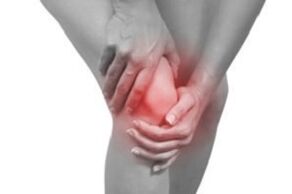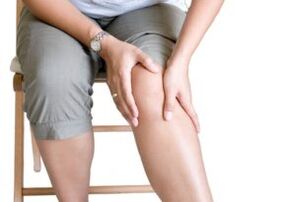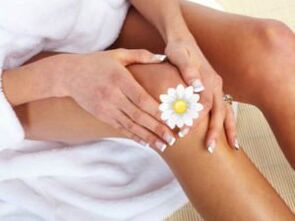
Knee pain from all the joints in the human body is the most common complaint of people. The knee joint is complex, carrying a large load during different types of physical activity, so there can be many causes of pain. Knee pain, although occasional and spontaneous, should not be ignored.
Knee pain, regardless of its intensity, significantly worsens the quality of life. There is no joy in your favorite outdoor activity, efficiency decreases, and a simple shopping trip becomes a problem.
In this article, we will look at what to do if you have knee pain, how to treat it, and whether it is possible to get rid of knee pain forever - the last question is especially relevant for older people who are thinking about sedentary movements and joint pain. syndrome is an indispensable companion of age.
Pain diagnosis
- It is necessary to study the nature of pain. The pain may be sharp, burning, stabbing, painful.
- Eliminate the initial conditions of pain - at night, after exercise, while walking, in the morning, sudden sharp pain.
- Were there any other signs of joint damage: swelling, hyperemia (redness), joint deformity, tingling, limited mobility.
- Check for a history of infection, stress, leg injury, or increased physical activity.
- Perform an instrumental examination at the treatment-and-prophylaxis facility (LPU) - blood test, X-ray diagnosis, analysis of synovial fluid.
Causes of knee pain
There are more than 200 articular pathologies, most of which are accompanied by more pain. Only on the basis of a complex of symptoms and examinations can you determine what is causing your knees.
Traumatic pathology
In traumatic pathologies, knee pain occurs with joint injuries (blows, falls, prolonged stress on the joints - typical for athletes) or general diseases of the body.
Let's look at the main traumatic pathologies.
Knee fracture
Fracture or displacement of the patella, fractures of the femoral and / or tibial condyles. When falling from a height above the knee, in car accidents, etc.
The victim experiences severe pain at the time of the stroke, the pain does not stop over time, may weaken slightly, but intensifies when pressing or walking.
The joint swells, deforms, fills with blood (hemarthrosis), the knee does not bend, the patella moves abnormally.
Out of the knee

It is characterized by the relative displacement of the joint bones. Dislocation of the knee joint has various complications (complete, incomplete, complicated by soft tissue rupture, etc. ).
Normal dislocations occur as a result of a knee injury or as a result of a congenital anomaly: weakness or excessive elasticity of the ligaments, straight sliding paths of the femur in the joint, excessive patellar position.
Dislocation of the knee joint is quite a serious injury, and if you do not take care of it in time, everything can end in serious complications. Knee dislocation is the most painful of all types, although it is rare.
Serious injuries such as dislocations should be treated in medical facilities, so there should be no independent intervention. This is done by traumatologists.
Crushing, breaking of tendons, ligaments
Depending on the degree of damage (partial rupture of individual fibers, incomplete rupture, complete rupture) symptoms appear: cracking and clicks during movement, bruising under the fracture site, limited flexion and extension of the joint, swelling of the knee, excessive mobility of the joint. (with complete breaking of the gardens). The pain is sharp and severe, but can not be seen immediately with a small injury, but after a while.
Bursitis
Inflammation of the periarticular bursa due to trauma, infections, metabolic disorders, autoimmune disease. It often occurs in athletes and overweight people. The knee swells, the pain varies in intensity, but increases with force and at night.
Meniscus hernia
It may be the result of trauma or degenerative changes in cartilage tissue. Acute trauma is characterized by severe pain, swelling, and limited mobility. Symptoms of degenerative changes are mild.
Diseases of the joints
Knee pain can be a sign of a medical condition.
we listedThe most common diseases with knee pain syndrome:
Rheumatism
Diagnosis is less common than in the 19th and 20th centuries. This is due to both the discovery of penicillin (and later the production of other antibiotics) and the low diagnostic potential that in the past, almost all joint diseases were associated with rheumatism.
A characteristic feature of rheumatism is alternate joint pain: first one joint becomes inflamed, then the other. For example, knee pain decreases, but occurs in another large joint (elbow, thigh).
Rheumatism is more common in children and adolescents, the disease develops after a streptococcal infection of the upper respiratory tract.
Note: Advanced rheumatism causes damage to the heart (rheumatic heart disease) or nervous system (chorea).
Reactive arthritis
It is more common in people of reproductive age, because inflammation of the joints is most often caused by pathogenic microbes that enter the body sexually.
Less often, reactive arthritis is caused by infections of the gastrointestinal tract or infectious inflammation of the nasopharynx (sore throat, flu). 1-4 weeks after the disease, the patient sees that his legs begin to ache at night.
Both large joints (knees, ankles) and small joints (big toe aches or pains) can be inflamed and painful. Knee pain is accompanied by swelling and / or redness.
Sometimes symptoms include conjunctivitis (inflammation and pain in the eyes), keratoderma (thickening of the skin under the feet).
Reiter syndrome
Urethritis (often, painful urination) and bowel disorders are common symptoms of reactive arthritis.
Osteoarthritis
Disease of the elderly. From time to time the knees hurt "for the weather" at night. Joint load (long walks) increases pain, swelling and impairs joint mobility.
After resting and warming up, the pain disappears.
Baker's cyst
Swelling behind the knee, feeling of tightness, difficulty moving.
Osteochondritis dissection (Konning's disease)
The cartilage covering the bones is peeled off, the aching knee hurts, and the movement of the joint is blocked when the fragment is completely peeled off.
Osgood-Schlatter disease
Adolescents are more often diagnosed. Knee pain increases when climbing stairs and squatting.
Rheumatoid arthritis
An autoimmune disease whose mechanism is unclear. It is noted that the initial conditions are a simple list of loads on the immune system: from stress and infection, to hypothermia. Immune organs attack their own cells, causing inflammation of the joints, especially the synovium.
Under the attack of immune cells, the membrane swells, increases in volume, and then begins to grow into nearby cartilage and bone tissue. The result of the process is pain in the knee joints, which becomes unbearable in the second half of the night.
The disease lasts for years, treatment consists of non-steroidal anti-inflammatory drugs, corticosteroid hormones, gold drugs, immunosuppressants, antimalarial drugs.
It is caused by improper metabolism. "Purine" products (meat, smoked meat, pickles) due to alcohol abuse.
Uric acid produced in the blood is deposited in the joints in the form of sodium urate crystals. Increased "deposits" gradually affect joint mobility, severe pain attacks appear, and the time interval between attacks gradually decreases.
Vascular pain in the knees is characterized by a feeling of tightness along the vein, sometimes patients feel a sharp tingling sensation.
Only a doctor, after a thorough examination, can tell why the knee hurts, if there is no obvious injury. It is unwise to rub the knee joint with a tool that "helps the neighbor. "After all, anything that helps to heal a joint injury can exacerbate the autoimmune mechanism of the disease.
Treatment of knee pain
The doctor chooses the treatment regimen depending on the diagnosis.
Therapeutic measures are aimed at combating:
- The cause of the disease - infection, tumors, abnormal metabolic processes, failure of the immune system.
- With pain syndrome - symptomatic treatment includes painkillers, intraarticular blockades.
- with degenerative processes - drugs with chondroprotectors help to restore joint cartilage tissue.
If necessary, consult surgery, endoprosthetics, physiotherapy for the joints and therapeutic exercises.
Painkillers
Checklist for those with knee pain - what to do to alleviate the situation.
| The cause of pain | What to do |
|---|---|
| The pain is clearly the result of trauma | Ensure immobility of joints and limbs, ice or cold compresses on the knee. Immediate medical attention. |
| Pain in arthritis (reactive, rheumatoid, etc. ) | Special treatment with antimicrobial and anti-inflammatory drugs is prescribed only by a doctor. You can apply a warm compress for night pains, ointments based on bee venom. |
| Pain in osteoarthritis after exercise or at night (post-traumatic, age-related, overweight people) | Compresses with any warming herbal tincture, rubbed into ointments with chondroprotectors. |
Severe joint pain is relieved by non-steroidal anti-inflammatory drugs (NSAIDs).
However, if the majority of patients (overweight people, age-related changes in the joints) adhered to the prophylactic minimum, they would not have to think about what to do with the pain:
- Adequate calcium, proper nutrition with vitamins, fight against excess weight;
- Reducing severe stress on the joint before a change of work, if the whole day consists of "standing up";
- Systematic physical therapy to strengthen muscles and ligaments - a good muscle corset reduces the load on the bones;
Joint diseases can develop over the years and can lead to a significant deterioration in quality of life. A timely visit to a doctor and an arsenal of folk remedies will help to maintain the joy of moving to old age.
Joint treatment at home - folk recipes
Home-made recipes for ointments and compresses based on natural ingredients are used in the courses - this is the only way to achieve lasting results.
7 simple folk remedies for knee pain:
- Cabbage leaves. Incisions are made in the fresh leaf to extract the juice. Put a spoonful of honey in the middle and apply this "compress" to the knee. The sheet is fixed with a bandage. Wear a bandage all day or follow the procedure at night. Burdock and plantain leaves are used in the same way.
- Propolis tincture for arthritis. If the knees "twist" at night (the cause of dull pain may be due to stress in the legs due to weather changes), lubricate the joint with a mixture and rub it on the skin until dry. If the knees are very sore, then prepare a full-fledged compress: moisten the soft tissue with tincture and apply to the joint, cover with a film and wrap with a scarf. The tool is also used to warm the joint when a painful knee cools down. Similarly, tinctures of natural stimulants are used: aloe, Kalanchoe, mummy, bee dead.
Important:If the disease is autoimmune, biologically active substances can not be used. Stimulants activate the immune system and aggravate the disease.
- Gelatin compress. A piece of gauze soaked in hot water is squeezed, 1 tsp in the middle. q. spills. gelatin, applied joint, wrapped in food foil and wrapped. Repeat the procedure at night for 14 days. The product promotes joint nutrition and cartilage regeneration.
- If your knee hurts a lot, a mustard compress will help. Take honey and dry mustard in equal proportions, add warm water and salt until an oatmeal consistency is achieved. Lubricate the knee with a mixture, cover it with a film and a piece of bandage. Exposure time 20-40 minutes. Remove when there is a severe burning sensation. Mustard compress is used daily for pain.
- To prevent pain in the legs, a drug is prepared for oral administration: gelatin is mixed in 0. 5 liters of water in the evening, heated in the morning until completely dissolved. Take ¼ - 1/2 cup before meals, drink for a month.
- Internal goat's oil (100 g) is mixed with "Zvezdochka" balm (1 jar), the resulting ointment is rubbed for venous and joint pain in the knee.
- Kefir mask. Add 0, 5 l kefir bread crumbs, 1 tsp. soda. The mixture is insisted 6 hours. The liquid is then filtered, moistened with gauze and compresses are applied overnight for several days until the pain disappears.

It is recommended to apply home remedies regularly with folk remedies, combined with traditional medicine and modern methods. Do not wait until the disease has established itself firmly and declares itself with severe pain, deformity of the joint. An early visit to the doctor will speed up recovery, and the chronic form of the disease is more difficult to treat.
Note:Treatment with folk remedies is allowed only with the permission of a doctor, after examination and diagnosis.


















































